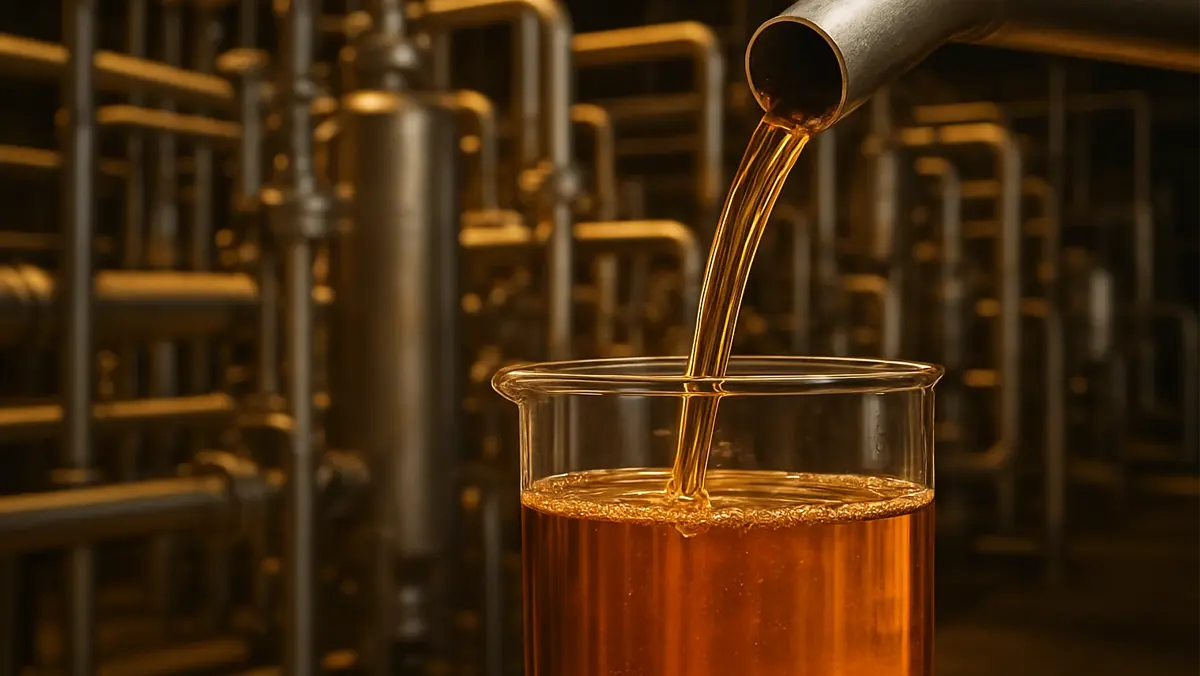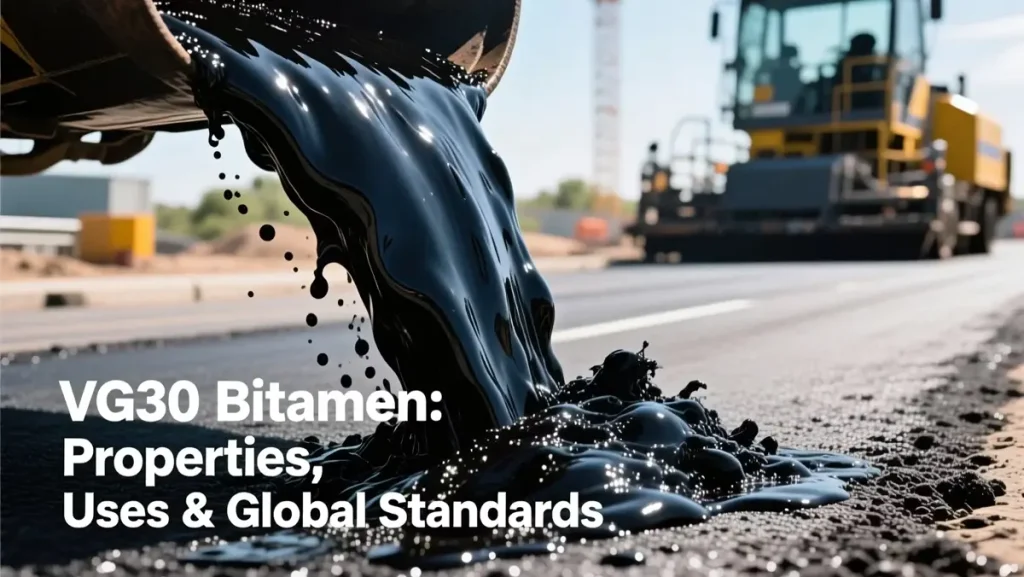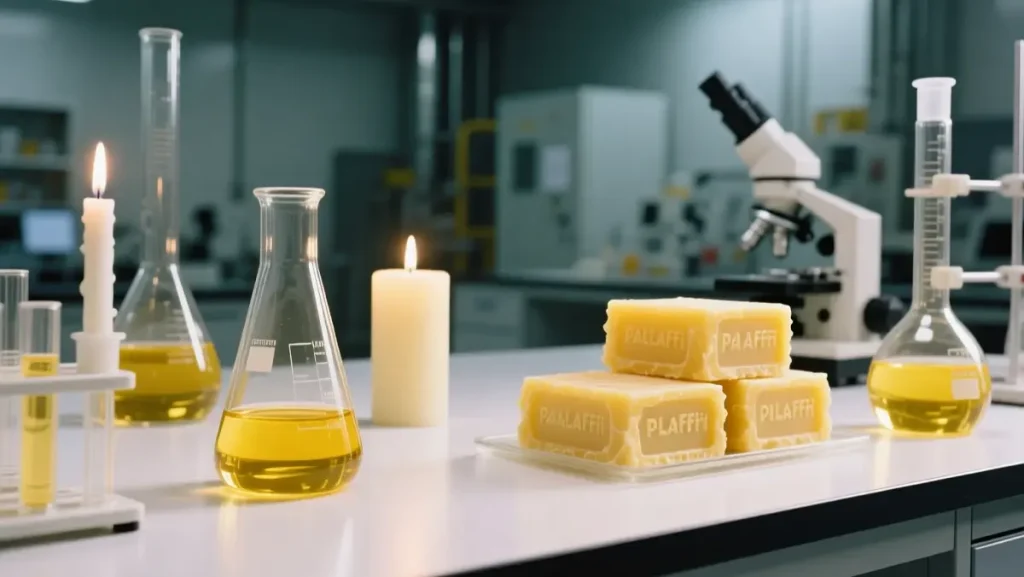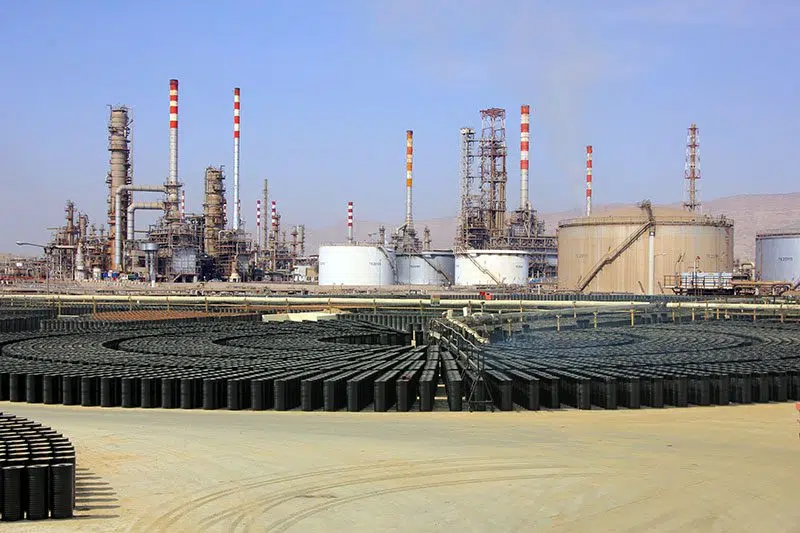Base oil is the heart of every lubricant. It is the main ingredient, making up around 70% to 99% of the finished oil you see in cars, factories, and machines. Without base oil, no engine or industrial equipment could operate smoothly.
In simple words, base oil is the “foundation” that allows lubricants to reduce friction, carry heat, and protect moving metal parts. It can come from crude oil or be made synthetically, depending on its quality and use.
This article explains what base oil is, the different types available, how it’s made, and its key industrial applications. We’ll also explore its main properties, common questions, and the shift toward greener, more sustainable base oils.
Understanding Base Oil — The Foundation of Lubrication
What exactly is base oil?
Base oil is a refined petroleum or synthetic substance that forms the main component of lubricants. It provides the basic viscosity and lubrication needed for machines and engines to work smoothly. Additives are later mixed with it to improve performance, protection, and durability.
Think of base oil as the “canvas,” and additives as the “colors” that make the final lubricant strong and efficient. Without consistent and pure base oil, even the best additives can’t perform properly.
How base oil is produced (crude oil vs. synthetic sources)
There are two main sources for producing base oil:
- Mineral or petroleum‑based oils: extracted from crude oil and purified through refining processes like solvent extraction or hydrocracking.
- Synthetic base oils: chemically created from smaller molecules in a controlled environment to achieve higher purity and better performance.
Petroleum‑based base oils are more common due to lower cost, but synthetic base oils perform better at extreme temperatures — ideal for high‑performance engines and industrial equipment.
Difference between base oil and finished lubricant
A finished lubricant is a combination of base oil (70–99%) plus additives (1–30%) such as detergents, anti‑wear agents, and antioxidants.
Base oil provides the fundamental lubrication; additives enhance protection and extend oil life.
So, while base oil gives the body and flow, additives deliver the “smart features.” This balance determines how well the lubricant works under pressure, temperature, and time.
Types of Base Oil and Their Unique Features
The American Petroleum Institute (API) classifies base oils into five groups (I–V) based on the refining method, sulfur content, and degree of saturation. Each group has unique properties that determine its performance and price.

Group I – Traditional Mineral Oils
Group I base oils are produced through solvent refining, an older process that leaves more impurities.
They contain:
- Less than 90% saturated hydrocarbons
- More than 0.03% sulfur
- A viscosity index between 80 and 120
These oils are cost‑effective and suitable for general lubrication in older engines and less demanding machinery. However, they oxidize faster and perform poorly at extreme temperatures.
Common use: automotive gear oils, metalworking fluids, and industrial lubricants in moderate conditions.
Group II – Highly Refined Mineral Oils
Group II base oils are made using hydrocracking technology, which removes impurities and improves molecular stability.
They have:
- More than 90% saturation
- Less than 0.03% sulfur
- A viscosity index similar to Group I (80–120)
These oils are clearer, more stable, and more oxidation‑resistant, providing cleaner operation and longer lubricant life.
Common use: modern engine oils, hydraulic fluids, and transmission fluids.
Group III – Synthetic‑Like Base Oils
Group III oils undergo severe hydrocracking and molecular restructuring. Though made from crude oil, they are refined so extensively that they’re often marketed as synthetic base oils.
They feature:
- Very high purity
- Viscosity index above 120
- Excellent thermal and oxidative stability
They perform very well in high‑performance engines and energy‑efficient systems, combining the benefits of synthetic performance with lower cost than full synthetics.
Common use: premium motor oils and industrial lubricants demanding higher temperature performance.
Group IV – True Synthetic (PAO) Oils
Group IV base oils are Polyalphaolefins (PAOs) — fully synthetic molecules created through chemical synthesis.
These offer:
- Outstanding low‑temperature flow
- Exceptional oxidation resistance
- Stability across wide temperature ranges
They are ideal for extreme conditions, including aerospace, racing engines, and very cold or hot environments.
Common use: synthetic engine oils, compressor oils, and industrial greases.
Group V – Specialty Base Oils
Group V includes all base oils not covered by Groups I–IV, such as esters, naphthenic oils, polyglycols (PAGs), and silicones.
These are often blended with other groups to enhance specific properties like lubrication at high pressure, biodegradability, or compatibility with seals.
Common use: refrigeration oils, biodegradable lubricants, and specialty industrial fluids.
Quick Comparison Table
| Group | Base | Processing | Viscosity Index | Performance | Cost |
|---|---|---|---|---|---|
| I | Mineral (solvent refined) | Low | 80–120 | Basic | Low |
| II | Mineral (hydrocracked) | Medium | 80–120 | Improved stability | Moderate |
| III | Mineral (severely hydrocracked) | High | >120 | Synthetic‑like | Moderate‑High |
| IV | Synthetic (PAO) | Chemical synthesis | ≥125 | Excellent | High |
| V | Others (esters, PAGs, etc.) | Specialty | Variable | Tailored | Variable |
How Base Oil Is Made — From Crude to Clarity
Producing high‑quality base oil is a complex process that transforms crude oil or synthetic feedstocks into clean, stable, and consistent lubricating molecules. Let’s look at each step of how this transformation happens.

Step 1: Crude Oil Selection or Synthetic Feedstock Preparation
For mineral base oils, the process begins with selecting suitable crude oil — typically paraffinic or naphthenic types, which yield better lubricating performance.
In contrast, synthetic base oils start from small chemical molecules such as ethylene or carbon monoxide, which are later built into uniform chains through chemical reactions.
Step 2: Distillation — Separating the Oil Fractions
The selected crude oil is heated in a distillation tower, where it separates into layers based on boiling points.
The heavy fractions left after light fuels (like gasoline and diesel) are the building blocks for base oil production. These fractions contain long‑chain hydrocarbons ideal for lubrication.
Step 3: Refining and Purification
This step removes unwanted components like sulfur, nitrogen, aromatics, and wax. There are two main refining methods:
- Solvent Refining: Uses chemical solvents to dissolve and separate impurities. (Common for Group I oils.)
- Hydroprocessing (Hydrocracking & Hydrotreating): Exposes oil to hydrogen under high pressure and temperature, breaking larger molecules into smaller, cleaner ones. (Used for Groups II and III.)
Hydroprocessing produces clearer, purer, and more thermally stable oil suitable for modern engines and long drain intervals.
Step 4: Dewaxing and Finishing
Next, unwanted wax crystals are removed through solvent or catalytic dewaxing to improve the oil’s flow at low temperatures.
Then the base oil is polished and filtered, making it ready for blending with additives.
Step 5: Quality Testing and Classification
Before it reaches the blender or end user, every batch undergoes strict quality checks for:
- Viscosity and viscosity index
- Oxidation stability
- Flash point and pour point
- Purity and color
The oil is then assigned to its proper API Group (I–V) category based on test results.
Result: From crude to crystal‑clear performance
By the end, what began as thick, dark crude oil turns into a clear, stable, high‑performing liquid — the base oil that powers millions of engines, turbines, and machines worldwide.
Key Properties of Base Oil and Why They Matter
The performance of any lubricant starts with its base oil properties. These characteristics determine how well the oil can reduce friction, resist aging, and perform under different temperatures and pressures. Let’s review the key features that make base oil so essential.
1. Viscosity and Viscosity Index (VI)
Viscosity is the measure of a fluid’s resistance to flow — simply put, how thick or thin the oil is.
Machinery requires oil that isn’t too thin (to avoid wear) or too thick (to avoid friction losses).
The viscosity index (VI) shows how stable the viscosity remains across temperature changes:
- A high VI means the oil stays consistent in cold and hot conditions.
- A low VI means it thickens or thins too easily, reducing performance.
Synthetic base oils generally have higher VI, providing better protection in extreme temperatures.
2. Oxidation and Thermal Stability
When exposed to heat and oxygen, oils gradually degrade — forming sludge, acids, and varnish.
Base oils with strong oxidation resistance last longer, keeping engines cleaner and reducing maintenance costs.
This property is vital for industrial machinery and long‑drain automotive oils that operate continuously under stress.
3. Pour Point and Low‑Temperature Fluidity
The pour point is the lowest temperature at which the oil can still flow.
Lower pour points ensure smooth operation in cold climates and protect equipment during winter starts.
Synthetic oils, such as PAO and esters, maintain fluidity even below freezing — a key advantage for aviation and high‑altitude operations.
4. Volatility and Evaporation Loss
When oil gets too hot, lighter molecules may evaporate, increasing consumption and emissions.
Low‑volatility base oils help reduce oil burn‑off, keeping engines efficient and minimizing environmental impact.
This is especially relevant in automotive applications where fuel economy and emission standards matter.
5. Lubricity and Film Strength
Lubricity refers to the oil’s ability to create a protective film between moving parts.
The stronger that film is, the less wear and metal‑to‑metal contact occurs.
High‑quality base oils deliver superior film strength, reducing friction and extending component life.
6. Compatibility with Additives and Materials
Modern lubricants depend on complex additive systems — detergents, dispersants, and anti‑wear agents.
A good base oil must mix well with these additives and remain stable when in contact with seals, metals, and other materials.
Poor compatibility can lead to foaming, corrosion, or reduced effectiveness.
Why These Properties Matter
Each property works together to ensure the lubricant performs flawlessly — protecting machinery, saving energy, and reducing downtime.
Choosing the right base oil isn’t just about viscosity or cost; it’s about finding the right balance of stability, flow, and protection for the intended application.
Industrial and Automotive Applications of Base Oil
Base oil is at the heart of countless machines, engines, and systems around the world. Because it controls friction, heat, and protection, it’s used across nearly every industrial and automotive sector. Below are the most important areas where base oils show their true value.

1. Automotive Lubricants
In vehicles — from passenger cars to heavy trucks — base oil forms the foundation of engine oils, transmission fluids, and gear oils.
It helps:
- Minimize friction and wear inside the engine
- Maintain viscosity under hot and cold conditions
- Prevent sludge, varnish, and deposits
- Extend oil drain intervals and engine life
Modern cars increasingly use Group III and IV base oils, which offer superior fuel economy, lower emissions, and high‑temperature stability.
Examples:
- Engine oil for gasoline/diesel cars
- Automatic transmission fluid
- Differential and gear oil
2. Industrial Lubricants
Industrial systems rely on large volumes of base oil for consistent performance. These include hydraulic systems, compressors, turbines, and bearings, all of which need clean and stable oils to work safely.
Industrial base oils provide:
- Smooth operation and reduced downtime
- Protection against rust, oxidation, and corrosion
- Reliable viscosity even under extreme load
- Efficient heat transfer
Common products made from base oils include hydraulic oils, circulating oils, turbine oils, and compressor lubricants.
3. Metalworking and Manufacturing
In metal cutting, grinding, or forming, fluids made from base oil act as coolants and lubricants, minimizing friction and helping shape precise components.
They also remove heat from the cutting area, improving tool life and surface finish.
Typical use: cutting oils, rolling oils, and forming lubricants — often blended from Group I or II oils for their balanced cost and performance.
4. Marine and Aviation Applications
Engines used in ships and airplanes face extreme conditions — high loads, water exposure, and temperature shifts.
That’s why they require base oils with excellent oxidation stability, low volatility, and resistance to shear and wear.
Marine oils often combine Group II and Group V components for protection against saltwater corrosion, while aviation oils favor fully synthetic PAO or ester‑based base oils for light weight and reliability at altitude.
5. Specialty and Biodegradable Lubricants
Beyond traditional uses, base oils are now central to environmentally friendly lubricants — especially in sensitive areas like agriculture, forestry, and marine environments.
Ester and PAG oils (Group V) are often chosen for their biodegradability and non‑toxicity, helping reduce ecological impact without sacrificing performance.
From car engines to factory floors, base oil drives the world of lubrication.
Its adaptability, purity, and stability make it the invisible hero behind energy efficiency, reliability, and smooth mechanical performance everywhere.
Market Trends and the Future of the Base Oil Industry
The global base oil market is evolving rapidly, driven by changes in technology, environmental goals, and consumer expectations. As industries move toward cleaner and more efficient operations, base oil producers are adapting their processes and products to meet these new demands.

1. Shift Toward Higher‑Quality Groups (II, III, and Synthetic)
Older Group I base oils are gradually being replaced by Group II and Group III grades.
These newer oils have:
- Lower sulfur and aromatic content
- Higher purity and oxidation stability
- Better performance in modern engines and machinery
Refineries worldwide are upgrading their facilities to produce hydroprocessed, premium‑grade base oils, while minimizing waste and emissions.
2. Growing Role of Synthetic Base Oils
Synthetic base oils, such as PAOs (Group IV) and esters (Group V), are expanding their market share thanks to their superior temperature stability and fuel‑saving properties.
Although they cost more, they deliver measurable benefits in:
- Extended drain intervals
- Reduced friction and wear
- Improved efficiency and environmental compliance
As hybrid and electric vehicles (EVs) grow, synthetics will play an even bigger role because EV systems require specialized low‑viscosity, thermally stable oils.
3. Sustainability and Bio‑Based Innovations
Sustainability is transforming the lubricant industry. Manufacturers are investing in renewable base oils derived from plant or waste sources — such as biodegradable esters and algae‑based oils.
These bio‑base oils reduce carbon footprints and align with international green regulations.
Future production will emphasize:
- Lower emissions and energy use
- Recyclability and re‑refining of used oils
- Biodegradable, non‑toxic formulations
4. Regional Market Insights
- Asia‑Pacific: Largest and fastest‑growing market due to industrial expansion and high vehicle demand.
- North America and Europe: Moving quickly toward Group III and synthetic products driven by environmental legislation.
- Middle East and Africa: Increasing investments in refining capacity for export markets.
This regional diversity shows that while demand remains strong globally, the type and quality of base oil varies by local regulations and economic factors.
5. Digitalization and Smart Lubrication Systems
Emerging technologies like IoT sensors and AI‑based monitoring are reshaping lubrication management.
Base oils now work within smart systems that track temperature, pressure, and oil degradation in real time — optimizing replacement schedules and preventing failures.
The Road Ahead
The base oil industry is shifting from volume to value and performance.
Tomorrow’s success will depend on innovation — in refining techniques, sustainability goals, and digital integration — to create products that are cleaner, longer‑lasting, and better aligned with a carbon‑neutral future.
Frequently Asked Questions (FAQ) About Base Oil
1. What is base oil used for?
Base oil is primarily used as the main component of lubricants — including engine oils, hydraulic fluids, compressor oils, and greases. It reduces friction, prevents wear, and ensures smooth operation of machinery across automotive and industrial applications.
2. What are the main types of base oil?
There are five API groups (I–V):
- Group I: basic mineral oil, solvent‑refined
- Group II: hydrocracked, higher purity
- Group III: very pure, synthetic‑like
- Group IV: synthetic PAO oils
- Group V: specialty oils such as esters or PAGs
Each type has different performance levels, costs, and ideal applications.
3. What’s the difference between base oil and synthetic oil?
A synthetic oil is a finished lubricant formulated using synthetic base oils (Group III, IV, or V) plus additives.
So, base oil is the raw material — while synthetic oil is the final blended product ready for engine or industrial use.
4. Is base oil environmentally friendly?
Traditional mineral base oils are derived from crude oil, but newer bio‑based and synthetic options are more environmentally friendly. Manufacturers are developing biodegradable base oils and improving re‑refining technology to reduce environmental impact.
5. Can different base oil groups be mixed?
Yes, but only by professional blenders. Mixing different base oils requires understanding their chemical compatibility. For example, some esters (Group V) may enhance the properties of Group III oils, but improper blending can cause instability or additive separation.
6. How is base oil quality measured?
Quality is determined by testing properties like viscosity index, sulfur content, oxidation stability, and purity. Higher‑group oils (II–V) generally have higher quality and better performance under stress or temperature extremes.
7. What trends are shaping the future of base oil?
The future points toward:
- More synthetic and renewable base oils
- Lower emissions and eco‑friendly production
- Integration with smart lubrication systems in modern machinery
These innovations will make base oil cleaner, longer‑lasting, and more efficient.
8. How long can base oil last before it degrades?
That depends on temperature, contamination, and oxidation. High‑quality base oils, especially synthetics, can last significantly longer before breaking down, enabling extended oil drain intervals and reduced maintenance costs.
Conclusion — The Essential Role of Base Oil in Modern Industry
Base oil may not grab attention like engines or machinery, but it is the silent force keeping the modern world running smoothly. From cars and planes to factories and power plants, its purity, stability, and lubrication power make it indispensable.
Throughout this guide, we’ve explored what base oil is, how it’s made, the various API Groups, and how each plays a role in different industrial and automotive applications. We’ve also seen how evolving technology and sustainability efforts are reshaping the base oil market — moving toward cleaner, higher-performance, and more eco-friendly solutions.
In essence, base oil is:
- The foundation of every lubricant formulation;
- The key to reducing friction and wear;
- The bridge between industrial reliability and environmental progress.
As industries continue to innovate and adopt new energy‑efficient technologies, the demand for advanced, sustainable base oils will only grow.
Understanding its properties and applications helps companies and professionals choose wisely — ensuring machines run longer, cleaner, and better.







